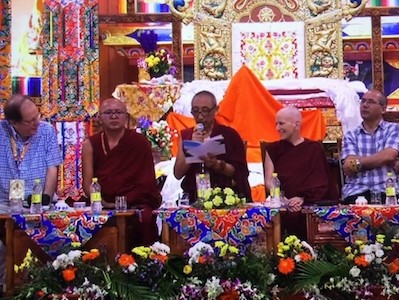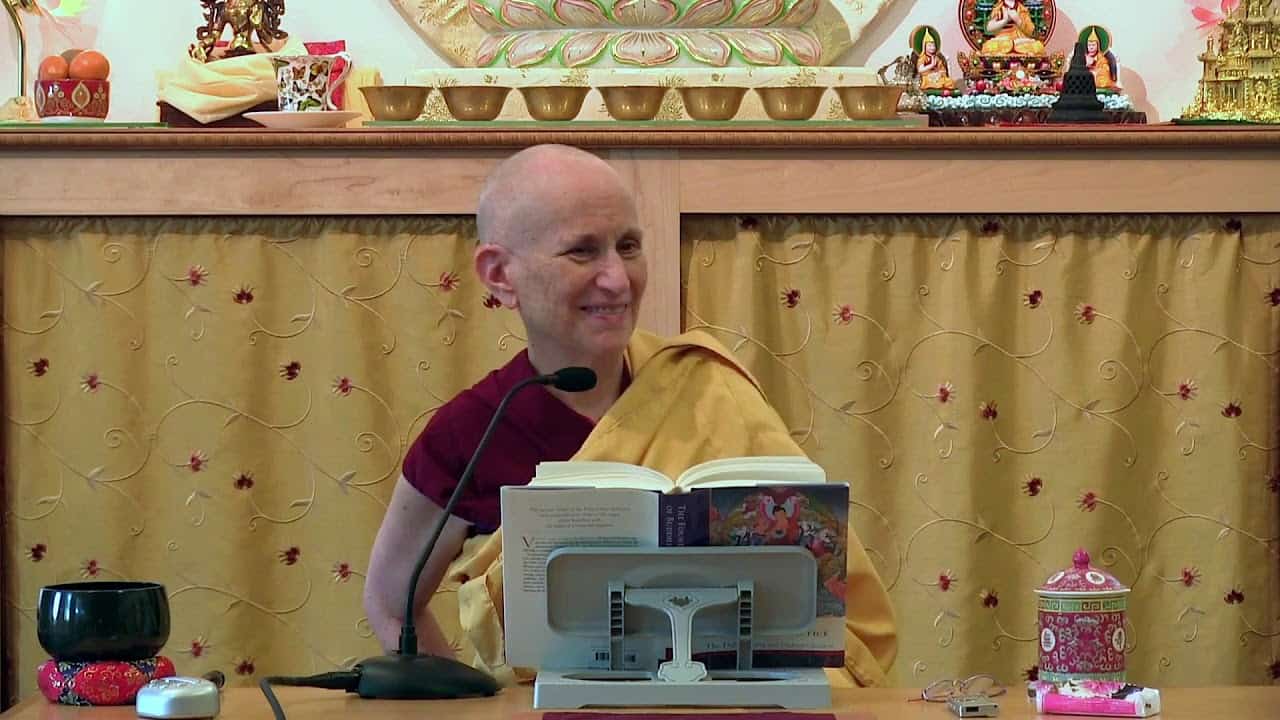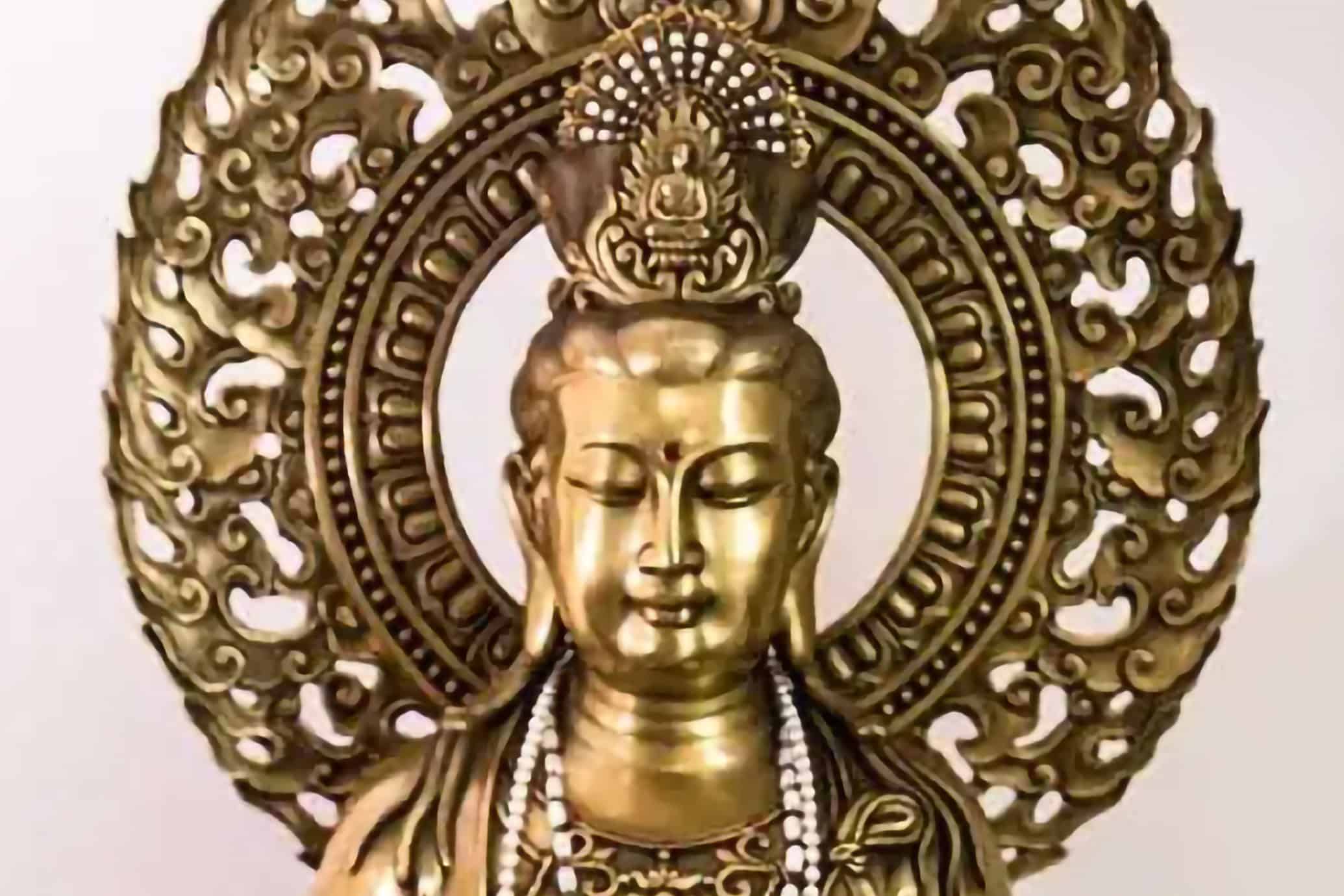Learning, Living, and Teaching Bodhicitta
Je Tsongkhapa’s Contribution to Spreading Compassion in the World

Bhiksuni Thubten Chodron was invited to speak at The International Conference on the Life, Thought, and Legacy of Tsongkhapa held at Ganden Monastery in Mungdod from December 18 to 23, 2019 to commemorate the 600th Anniversary of Je Tsongkhapa’s parinirvana. Her presentation—part of a panel on Tsongkhapa’s contributions to lamrim, lojong, and compassion training—has been published in Tsongkhapa: The Legacy of Tibet's Great Philosopher-Saint, a collection of highlights from the conference.
As a Buddhist nun who teaches in the West and in the East (Taiwan, Southeast Asia, and Indonesia), I often share the Buddhadharma with audiences from diverse walks of life who did not grow up as Tibetan Buddhists but came to it as teenagers or adults. Due to their social, cultural, and educational backgrounds, they carry certain preconceptions with them about the meaning of compassion and altruism that can become obstacles in their Dharma practice. Here I would like to share how, through the example of his life and teachings, Je Rinpoche can help Westerners and non-Tibetans to cultivate genuine compassion for the benefit of others and themselves.
One of the foremost things I appreciate about Je Rinpoche’s life is that he showed through personal example the importance of both study and practice and the necessity to build a firm foundation of the Buddhist world view and engage in the preliminary practices. This sends a strong message to those people who would like to skip the preliminaries and the foundational teachings on the four truths and go straight to tantra because that’s the highest practice. Je Rinpoche teaches us by example that we need to have our feet on the ground when practicing the Dharma. He learned and meditated on the foundational teachings and then engaged in the various ngondro, or preliminary practices to tantra. I also admire his nonsectarian attitude of learning from a wide variety of scholars and practitioners, which is quite different from what we sometimes see in Buddhism in the West, where people praise the non-sectarian approach, but don’t go to Dharma centers in a different tradition. Je Rinpoche’s life shows us the importance of cultivating a broad perspective and having an open mind.
But his open-mindedness is far from belief without investigation. He emphasized the value of employing reasoning to not only gain wisdom but also to build faith in the Three Jewels and in the method side of the path. For example, society in general often considers compassion to be sentimental and emotional to a fault when that is not the case. Here I’d like to mention some misconceptions that people who did not grow up as Tibetan Buddhists often hold about compassion, and how Je Rinpoche’s approach counteracts them:
- Misconception: To be truly compassionate, you have to suffer.
Buddhist response: That’s the model in Christian society with Jesus suffering on the cross. If you feel any happiness at all, you’re being selfish. That’s not the Buddhist approach; in fact bodhisattvas on the first ground are called the Joyous Ones. Bodhisattvas are happy! We can be happy and compassionate at the same time. When scriptures say that bodhisattvas can’t endure the suffering of others, it means that their wish to alleviate others’ suffering is so strong that they won’t procrastinate to help them. But bodhisattvas do not fall into personal distress by witnessing others’ misery, for doing so would impede their ability to reach out and be of benefit. Personal distress gets us stuck in our own feelings, whereas compassion focuses on others and cares about their experience. - Misconception: Compassion must be for everybody else, never for yourself. Taking care of ourselves is selfish.
Buddhist response: In Buddhism, practicing the bodhisattva path involves accomplishing the purposes of yourself and of others. It’s not an either-or situation; it’s both-and. Attaining the truth body (dharmakaya) is fulfilling your own purpose by purifying your mind and developing all excellent qualities. Attaining the form body (rupakaya) of a buddha fulfills others’ purpose by manifesting in a multitude of difficult forms to benefit others. By having the compassion for your own suffering in saṃsāra, you are motivated to improve yourself so you can best benefit others. You need to take care of yourself in a healthy way in order to practice the Dharma and be of service to sentient beings. That isn’t selfishness. - Misconception: People should appreciate our compassion.
Buddhist response: Seeking praise or gratitude for the help we’ve given takes the joy out of helping. We mask this self-centered wish by saying that it’s only being polite on others’ part if they show their gratitude to us in return. His Holiness the Dalai Lama says that he is the primary beneficiary of his compassion for others. Why? Because acting with compassion brings happiness to his own mind; he feels content and knows his life has meaning. Plus, showing kindness to others improves our relationships with them. Since we cannot make others benefit from our aid, counting on their appreciation is foolish. - Misconception: If you’re compassionate, you’re a pushover or a doormat.
Buddhist response: Our worldly attitude believes that if you’re compassionate, everyone will take advantage of you. They will walk all over you, and you can’t stick up for yourself because you’re so kind. That’s not what Je Rinpoche teaches or what he shows through his life. Being a bodhisattva requires incredible self-confidence and requires incredible inner strength. If you’re compassionate, you may have to risk other people getting mad at you when you try to do what’s beneficial for them, but they don’t like it. You have to be willing to risk your reputation to do what you know in your heart is good for others in the long term. - Misconception: Compassion is an easy practice.
Buddhist response: Some people think, “Renunciation and compassion are practices for beginners. Wisdom—we’ve got that mastered. We want Tantra, Mahamudra, and Dzogchen.” Je Rinpoche showed us that we need consistent and repeated meditation to genuinely transform our minds. The three principal aspects of the path—renunciation, bodhicitta, and wisdom— are not easy practices. They’re not things we do quickly so we can go on to Tantra because we’re sophisticated practitioners. The three principal aspects of the path are very rich and not so easy when we really try to practice them and transform our mind. His Holiness says it’s easy to understand teachings on compassion and bodhicitta but generating these states of mind is very difficult. - Misconception: Compassion leads to burnout.
Buddhist response: Some people fear that if they’re compassionate, they’ll get worn out and be unable to function. That’s not true. If we “burnout from compassion,” our compassion wasn’t real compassion. There was probably some other motivation involved, because genuine compassion gives us consistent mental and emotional energy. We may get physically tired, and we need to rest, and that’s fine. Shantideva counsels us to rest when we need to so that later, with joy, we can resume our compassionate work.
There are many other ways in which Je Rinpoche’s teachings help to clarify what compassion is, especially in his work Illumination of the Thought (dgongs pa rab gsal). There he describes three kinds of compassion: compassion observing sentient beings’ suffering in cyclic existence, compassion observing sentient beings qualified by impermanence, and compassion observing sentient beings qualified by emptiness. Thinking of sentient beings qualified by impermanence or emptiness is a completely new idea in the West. We usually think of compassion for sentient beings with physical and emotional pain, but we don’t think of compassion for people who are impermanent or empty by nature.
Another important topic related to cultivating compassion is ethical conduct. One of Je Rinpoche’s foremost contributions to Buddhism in Tibet was reviving the Vinaya, or monastic discipline. In our day too, the importance of ethical conduct needs to be emphasized; unfortunately, there have been many scandals in recent years due to some monastics’ improper behavior. I am often invited to teach in East Asia and Southeast Asia, and unfortunately Tibetan Buddhism doesn’t have a good reputation among many people. It is associated primarily with Tantra and people’s image of Tantric practitioners is that they drink and have sex. Many lamas travel to this region and give initiations. They ring bells, play drums, and so on, but they don’t always teach the Dharma. As a result, some Buddhists there think that Tibetan Buddhism isn’t really Buddhism but is closer to magic and fortune telling. This makes me sad because our tradition is so rich.
The behavior of some monastics who teach in these areas has also led to many people slandering Tibetan Buddhism in general as well as His Holiness and Dalai Lama. This occurs because some monks are not keeping their precept to avoid sexual conduct. This may be difficult to acknowledge, but I bring this up because it’s an important issue that needs to be addressed and corrected. All of us are responsible for upholding Je Rinpoche’s legacy, whether we are ordained or lay, scholars or practitioners. To pass this legacy to future generations, ethical conduct is crucial, especially on the part of monastics.
Another difficult topic is monastics going to these regions to seek donations, supposedly for their monasteries, but actually for their own pocket or for their families. This too gives people a bad impression of Tibetan Buddhism.
If we appreciate Je Rinpoche, we will do our best to put his teachings on compassion and ethical conduct into practice. I know that Je Tsongkhapa saved my life. I was born and grew up in America at a time when the Dharma was not widespread. As a young person, I was looking for meaning and when I encountered Je Rinpoche’s teachings it gave purpose and meaning to my life. His teachings have so much potential to help individuals, societies, and the world, but in order for that to happen, we have to show this by our own example. In that regard I would like to commend the efforts of the Reimagining Doeguling Tibetan Settlement project, that continues its good work to preserve and spread the rich legacy of Tibetan Buddhism and culture. Your activities, from working to improve the infrastructure of the settlement for locals and visitors, to supporting the healthcare and nutrition for monastics (especially the nuns), to helping to sustain the monasteries and nunneries where these teachings are taught and preserved, are remarkable. May all our efforts enable Je Rinpoche’s teachings and the precious Dharma to continue to flourish in the world.
For the audio version and transcript of this talk, see “Clarifying misconceptions about compassion“
Venerable Thubten Chodron
Venerable Chodron emphasizes the practical application of Buddha’s teachings in our daily lives and is especially skilled at explaining them in ways easily understood and practiced by Westerners. She is well known for her warm, humorous, and lucid teachings. She was ordained as a Buddhist nun in 1977 by Kyabje Ling Rinpoche in Dharamsala, India, and in 1986 she received bhikshuni (full) ordination in Taiwan. Read her full bio.


